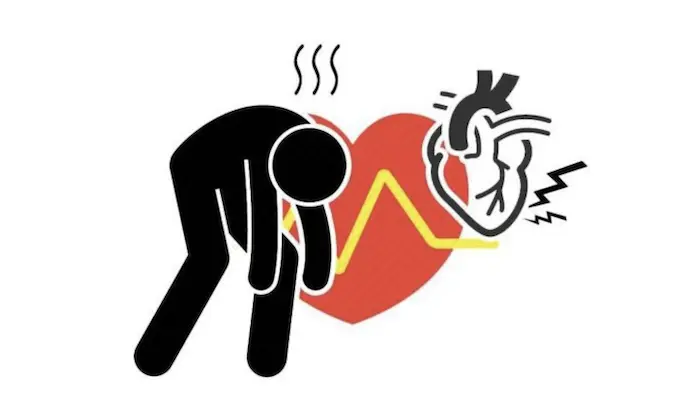Bradycardia is a cardiac condition characterized by an abnormally slow heart rate, typically defined as fewer than 60 beats per minute in adults. While a low heart rate can be normal in some individuals such as athletes or during sleep, bradycardia becomes clinically significant when the heart beats too slowly to maintain adequate blood flow to meet the body’s needs.
This article provides a detailed professional overview of bradycardia, including its symptoms, causes, diagnostic considerations, and treatment options.
What Is Bradycardia?
Bradycardia is a type of arrhythmia where the heart rate is slower than normal, often below 60 beats per minute. The heart’s natural pacemaker, the sinoatrial (SA) node located in the upper right chamber of the heart, generates electrical impulses that regulate heartbeat. Bradycardia occurs when these impulses slow down or are blocked, resulting in a reduced heart rate that can impair effective blood circulation.
Causes of Bradycardia
Bradycardia results from disturbances in the heart’s electrical system or other systemic conditions affecting heart rate regulation. The main causes include:
1. Electrical System Dysfunction
Sinoatrial (SA) node dysfunction or Sick Sinus Syndrome: The SA node fails to generate impulses reliably, causing slow and irregular heart rhythms, especially common in older adults.
Heart block (Atrioventricular block): Electrical signals from the atria fail to reach the ventricles properly, leading to slowed ventricular contraction and bradycardia.
2. Heart Disease and Damage
Coronary artery disease, heart attacks, myocarditis, or heart surgery can damage the heart muscle and conduction pathways, disrupting normal heart rhythms.
Rheumatoid arthritis and infections such as endocarditis or myocarditis may also impair electrical conduction.
3. Physiological and Other Medical Conditions
Advanced age: Natural degeneration of the cardiac conduction system increases bradycardia risk.
Athletic conditioning: Well-trained athletes often have lower resting heart rates due to enhanced cardiovascular efficiency.
Hypothyroidism: Low thyroid hormone levels reduce heart rate by decreasing receptor expression that normally increases heart rate.
Sleep apnea: Repeated episodes of breathing interruption during sleep cause intermittent stress on the heart, leading to rhythm disturbances including bradycardia.
Electrolyte imbalances: Abnormal potassium, calcium, or magnesium levels can interfere with electrical activity of the heart.
Medications: Beta blockers, calcium channel blockers, antiarrhythmics, and some antidepressants can slow heart rate as a side effect.
Other causes: Increased vagal tone, intracranial pressure, hypothermia, and hypoxia can also precipitate bradycardia.
Symptoms of Bradycardia
Symptoms of bradycardia vary depending on the severity of the slow heart rate and the body’s ability to compensate. Some individuals, especially those physically active or with well-conditioned hearts, may be asymptomatic. However, when the heart cannot pump sufficient blood, symptoms emerge due to reduced oxygen delivery to organs, particularly the brain.
Common symptoms include:
- Fatigue and weakness
- Dizziness or lightheadedness
- Fainting or near-fainting spells (syncope)
- Shortness of breath
- Chest pain or angina
- Palpitations or irregular heartbeats
- Cognitive difficulties such as memory problems, brain fog, or difficulty concentrating
Severe bradycardia can lead to complications including heart failure, frequent fainting, and in extreme cases, sudden cardiac arrest or death.
Diagnosis of Bradycardia
Diagnosis involves clinical evaluation and diagnostic testing:
History and physical examination: Assess symptoms and risk factors such as medication use and underlying diseases.
Electrocardiogram (ECG): Confirms slow heart rate and identifies the type of bradycardia or conduction block.
Blood tests: Evaluate electrolytes, thyroid function, cardiac enzymes, and medication levels.
Holter monitoring or event recorders: Continuous ECG monitoring to detect intermittent bradycardia episodes.
Echocardiogram: Assess structural heart disease.
Sleep studies: If sleep apnea is suspected.
Treatment of Bradycardia
Treatment depends on the cause, severity of symptoms, and presence of complications.
1. Address Underlying Causes
Discontinue or adjust medications that slow heart rate.
Correct electrolyte imbalances and treat hypothyroidism or infections.
Manage sleep apnea with CPAP or other therapies.
2. Symptomatic Bradycardia Management
If bradycardia causes symptoms such as syncope, hypotension, or heart failure, immediate treatment is necessary.
Atropine: First-line drug for acute symptomatic bradycardia, administered intravenously to increase heart rate by blocking vagal effects on the heart.
If atropine is ineffective, alternatives include dopamine or epinephrine infusions.
Temporary transcutaneous pacing may be used in emergencies to maintain heart rate until definitive treatment.
3. Permanent Device Therapy
Pacemaker implantation: The most effective long-term treatment for persistent symptomatic bradycardia or high-degree heart block. Pacemakers send electrical impulses to stimulate heartbeats when the intrinsic rate is too slow.
Implantable cardioverter defibrillators (ICDs): Used when bradycardia coexists with risk of dangerous arrhythmias.
4. Lifestyle and Monitoring
Regular cardiovascular exercise, a heart-healthy diet, and avoidance of tobacco and excessive alcohol reduce risk factors for heart disease and bradycardia.
Ongoing follow-up to monitor device function and heart rhythm is essential.
Conclusion
In conclusion, bradycardia is a complex cardiac arrhythmia with diverse causes ranging from benign physiological adaptations to serious heart disease. Recognition of symptoms, accurate diagnosis, and tailored treatment including medication adjustment, addressing underlying conditions, and device therapy are key to effective management and improved patient outcomes.
Related topics:


